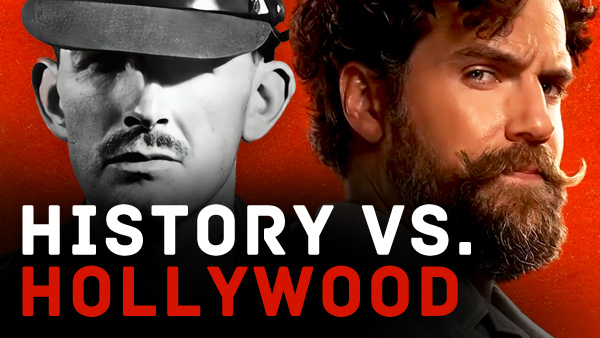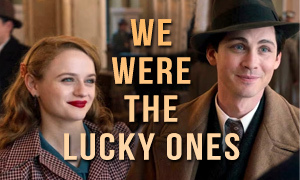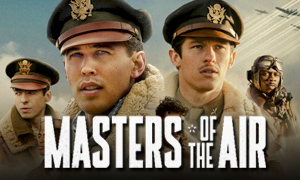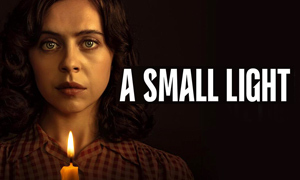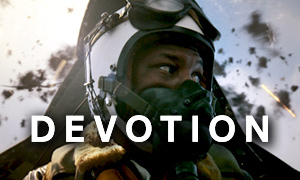How Accurate is "Midway"? The Movie vs. the True Story of the Battle of Midway
| REEL FACE: | REAL FACE: |
Ed Skrein
Born: March 29, 1983 Birthplace: Camden, London, England, UK | Lieutenant Richard 'Dick' Best
Born: March 24, 1910 Birthplace: Bayonne, New Jersey, USA Death: October 28, 2001, Santa Monica, California, USA |
Woody Harrelson
Born: July 23, 1961 Birthplace: Midland, Texas, USA | Admiral Chester Nimitz
Born: February 24, 1885 Birthplace: Fredericksburg, Texas, USA Death: February 20, 1966, San Francisco, California, USA |
Patrick Wilson
Born: July 3, 1973 Birthplace: Norfolk, Virginia, USA | Lieutenant Commander Edwin T. Layton
Born: April 7, 1903 Birthplace: Nauvoo, Illinois, USA Death: April 12, 1984, Carmel, California, USA |
Luke Evans
Born: April 15, 1979 Birthplace: Pontypool, Wales, UK | Lieutenant Commander Wade McClusky
Born: June 1, 1902 Birthplace: Buffalo, New York, USA Death: June 27, 1976, Bethesda, Maryland, USA |
Nick Jonas
Born: September 16, 1992 Birthplace: Dallas, Texas, USA | Aviation Machinist Mate Bruno Gaido
Born: 1920 Birthplace: Colorado, USA Death: June 14, 1942, Pacific Ocean (drowned by Japanese) |
Aaron Eckhart
Born: March 12, 1968 Birthplace: Cupertino, California, USA | Lieutenant Colonel Jimmy Doolittle
Born: December 14, 1896 Birthplace: Alameda, California, USA Death: September 27, 1993, Pebble Beach, California, USA |
Dennis Quaid
Born: April 9, 1954 Birthplace: Houston, Texas, USA | Vice Admiral William 'Bull' Halsey
Born: October 30, 1882 Birthplace: Elizabeth, New Jersey, USA Death: August 16, 1959, Fishers Island, New York, USA |
Luke Kleintank
Born: May 18, 1990 Birthplace: Cincinnati, Ohio, USA | Lieutenant Clarence Earle Dickinson
Born: December 1, 1912 Birthplace: Jacksonville, Florida, USA Death: October 4, 1984, Los Olivos, California, USA |
Darren Criss
Born: February 5, 1987 Birthplace: San Francisco, California, USA | Lieutenant Commander Eugene Lindsey
Born: July 2, 1905 Birthplace: Sprague, Washington, USA Death: June 4, 1942, near Midway Atoll shot down by Japanese Zero fighters |
Jake Weber
Born: March 19, 1964 Birthplace: London, England, UK | Rear Admiral Raymond Spruance
Born: July 3, 1886 Birthplace: Baltimore, Maryland, USA Death: December 13, 1969, Pebble Beach, California, USA |
Tadanobu Asano
Born: November 27, 1973 Birthplace: Yokohama, Japan | Rear Admiral Tamon Yamaguchi
Born: August 17, 1892 Birthplace: Tokyo, Japan Death: June 4, 1942, Pacific Ocean near Midway Atoll (killed in action - went down with carrier) |
Etsushi Toyokawa
Born: March 18, 1962 Birthplace: Osaka, Japan | Admiral Isoroku Yamamoto
Born: April 4, 1884 Birthplace: Nagaoka, Niigata, Empire of Japan Death: April 18, 1943, Buin, Solomon Islands, Territory of New Guinea (bullet wound to head) |
How much of WWII does the Midway movie cover?
Director Roland Emmerich's Midway, which is based on the true story of the Battle of Midway, covers roughly six months of the war in the Pacific, from the attack on Pearl Harbor through the decisive battle around Midway Atoll, which turned the tide of the war in favor of the U.S.
Is the attack on Pearl Harbor depicted accurately in the movie?
For the most part, yes. It would be hard to make a movie about the Battle of Midway without putting at least some emphasis on the Japanese attack on Pearl Harbor. The December 7, 1941 surprise attack was arguably the U.S. Navy's greatest defeat. It's also what prompted the U.S. to enter the war, and it set the American Navy on a course to victory at Midway. The movie's version of the attack on Pearl Harbor is largely accurate. This includes the salvage operations we see going on afterwards.
The Midway true story confirms that the two U.S. aircraft carriers based at Pearl Harbor at the time were not there on the day of the Japanese attack. USS Enterprise and USS Lexington were out on identical missions, ferrying aircraft to island outposts. USS Enterprise had delivered 12 Grumman F4F-3 Wildcats to Wake Island and USS Lexington was on its way to Midway Island with 18 Vought SB2U-3 Vindicators. The fact that the two carriers were spared would come back to haunt the Japanese fleet. -We Are The Mighty
Is Mandy Moore's character, Anne Best, based on a real person?
Yes. At 32 years old, Dick Best was older than most of the men serving around him. Though we couldn't find much information about his wife, we do know that he was married at the time and had a four-year-old daughter, Barbara Ann, similar to what's seen in the movie. The Bests were living in Waikiki, Hawaii. After retiring from the Navy in 1944 following 32 months of treatment for tuberculosis, he moved his family to Santa Monica, California where he lived for the rest of his life.
Was the situation really that precarious for the U.S. Navy following the attack on Pearl Harbor?
Yes. A Midway movie fact check confirms that the U.S. was in a precarious situation. Things were really that dire for Admiral Nimitz and the U.S. Navy following the December 7, 1941 attack on Pearl Harbor. When Admiral Nimitz took command of the Pacific Fleet following the attack, there were just a few support ships left to protect the aircraft carriers from the gigantic Japanese Navy. Morale among the U.S. Navy was low and most sailors lacked experience. At the time, the U.S. military ranked only fifth in the world, behind the UK, Germany, Soviet Union and Japan. -We Are The Mighty
If the U.S. had been defeated in the Pacific, could the Japanese have invaded the West Coast of America?
Dick Best (Ed Skrein) tells his wife Anne (Mandy Moore) this in the movie, which heightens the stakes before he goes off to battle. In reality, following the attack on Pearl Harbor, the Japanese were far from a land invasion of the West Coast of America, which was beyond their capability. At best, Admiral Yamamoto and the Japanese Army were considering an invasion of the Hawaiian island chain (Midway Island is part of that chain). It's also possible that Japan would have tried to bomb cities along the West Coast of America, similar to what the U.S. did to Tokyo. However, Japan's loss at Midway put a stop to their ability to do either.
Did Lieutenant Commander Edwin T. Layton's intelligence unit crack the Japanese code?
Yes. Edwin T. Layton, who is portrayed by Patrick Wilson in the movie, commanded the intelligence unit that cracked the Japanese code. Working in an underground bunker nicknamed the "Dungeon," his unit ciphered through thousands of Japanese messages. It's true that Navy Band members were brought in to help decode. Despite the success of the codebreakers, they were only able to come up with an educated guess as to the location of the Japanese fleet. As a result, the leaders in Washington opted to instead strike the Japanese homeland, sanctioning a mission known as the "Doolittle Raid," named after the man who planned and led the operation, Lieutenant Colonel James Doolittle (Aarron Eckhart). A fact check of the Midway movie's historical accuracy reveals that there was indeed a turf battle between the cryptologists in Washington, D.C. and the cryptologists in Hawaii under Layton, who were correct in their conclusions about the Japanese Navy attacking Midway. -We Are The Mighty
Why was the Battle of Midway so important?
Eventually, Edwin T. Layton's codebreakers were able to determine the likely location of the Japanese fleet. While they weren't able to decipher all of the Japanese code, the bits of information they understood pointed to Midway as the location of the fleet. Admiral Nimitz put his faith in Layton's unit and ordered the two carriers to Midway. It is believed that the Japanese were on their way to capture Midway Atoll and use it as an advance base from which to attack and destroy the U.S. Pacific Fleet. The island is part of the Hawaiian archipelago. Midway's significance lies in the fact that it is roughly halfway between Asia and North America, making it an optimal strategic location.
The Battle of Midway marked the first decisive victory for American forces in the Pacific Theater during WWII. Following six months of bad news that began with Japan's attack on Pearl Harbor, which kicks off the film, Midway was the first significant step in a three-year campaign to defeat Japan. During the June 4-7, 1942 air and sea battle, American forces levied a decisive blow on the attacking Japanese fleet, securing a victory that has been heralded as the U.S. Navy's greatest comeback.
How accurate are the ships and planes seen in Midway?
When director Roland Emmerich set out to make Midway, he ran into a problem. None of the historic aircraft carriers and planes from that time period are in their wartime condition. "Even when you have some aircraft carrier sitting around, like one in Alameda and one in, I think, South Carolina or [the Intrepid] in New York, they were altered in the '60s," says Emmerich. "The flight deck is totally different, et cetera, et cetera. And then they have actually put modern technology in some of the flak turrets." This goes for the military aircraft too, including the Douglas SBDs (scout bombers) that still exist. They've been altered so that they're allowed to be flown. Emmerich could not find Douglas TBDs (torpedo bombers) anywhere since most were probably scrapped since they weren't stellar airplanes.
"So, we had to pretty much create everything," says Emmerich. "When you can create everything, then naturally you can be absolutely exact. Our aircraft carriers, both Japanese and Enterprise and the Hornet, what you see is super correct because there's endless research material, photographs and stuff." The filmmakers shot much of Midway indoors against a blue screen on a giant soundstage in Montreal, where they built part of a flight deck. "It's a relatively perfect re-creation of everything," Emmerich added. However, what arguably detracts from Midway's historical accuracy is the fact that many of the planes and shots of the carriers were created digitally and therefore are not authentic replications of the originals. -Military.com
Some of the payloads seen on the planes in the film are represented inaccurately. For example, while the Douglas TBD-1 Devastator could be equipped with a torpedo or bombs, the aircraft would not have been equipped with both at the same time as shown in the movie. It was an underpowered airplane that could barely make it off the carrier with the weight of just a torpedo. Furthermore, if the filmmakers had accurately researched the Midway true story, they would know that the real-life Devastator did not have wing racks that could carry two 500 pound bombs like we see it doing in the film (pictured below). -Military Aviation History
Another filmmaking error in the scene above is the fact that the TBD Devastator is shown releasing a torpedo directly at a ship going roughly 20 knots (23 mph). The problem with this depiction is that the ship would be out of the way by the time the torpedo reaches it. Instead, you have to lead the torpedo and aim out in front of the ship, anticipating its location when the torpedo finally reaches it. To the film's credit, the concept of "leading" is mentioned when anti-aircraft rounds are being fired at enemy planes attacking a carrier.
How accurate are the combat sequences in Midway?
While a Midway fact check reveals the combat sequences to be mostly accurate, the filmmakers seemed to sacrifice various details in order to get the shots they wanted. For example, during the Japanese attack on Pearl Harbor that opens the film, it appears that the torpedo bombers are attacking from the wrong angles, including when the Japanese aircraft are attacking down battleship row. The latter was very likely done to get a long tracking shot showing all of the different types of enemy aircraft.
A somewhat far-fetched scene later in the film is when we see Dick Best (Ed Skrein) performing a hammerhead stall in his Dauntless in order to make Japanese aircraft overshoot him. The maneuver involves his plane heading into a vertical climb until it almost stalls and then dropping the nose to reverse the direction of flight. Although this is an actual combat maneuver, it is not one that a pilot would have attempted in a Dauntless.
The formations of the planes and ships in the movie are often too close together. This was likely done in order to capture more planes and ships in the shot. The planes are often seen flying too low as well. An example of this can be observed during the Japanese attack on Midway Atoll.
The destruction is also exaggerated at times. For example, in one scene we see the U.S. conducting an air raid in the Marshall Islands on a Japanese-controlled air base. The Dauntlesses blow up five or so Mitsubishi G3Ms on the ground. However, in real life, it is believed they only hit one G3M on the ground. The reality of combat during that time is that many of the bombs that were dropped didn't hit their targets. However, for the purpose of a movie, the destruction is conveyed more effectively if we see an exaggerated number of successful hits, or the hits happening all at once. -Military Aviation History
Did a burning Mitsubishi G4M bomber crash into a Dauntless SBD on the carrier deck as Bruno Gaido fired at the bomber from the SBD's turret?
Yes. In the movie, we see Nick Jonas' character, Aviation Machinist Mate Bruno Gaido, jumping into a Dauntless SBD's turret while the plane is still parked on the USS Enterprise's deck. He mans the .30 caliber machine gun and fires at an incoming Japanese Mitsubishi G4M "Betty" bomber that has both engines on fire. The G4M crashes into the Dauntless SBD, cutting off the SBD's tail before the G4M cartwheels off the carrier's deck into the ocean. You might have rolled your eyes at this scene, but while researching the Midway true story, we surprisingly learned that it indeed happened in real life. The incident unfolded when the Enterprise was in the Central Pacific near the Marshall Islands on February 1, 1942. Like in the movie, Bruno Gaido lived through the incident and his shipmates later said that it was his relentless firing that caused the incoming bomber to spin at a ninety degree angle, sparing the carrier from a direct hit. After the event, Vice Admiral William F. Halsey promoted Gaido from Third Class to First Class.
Was Bruno Gaido captured and drowned by the Japanese?
It's true that while Bruno Gaido (portrayed by Nick Jonas) was serving as the gunner in Ensign O'Flaherty's Dauntless during the Battle of Midway, they were forced to ditch the plane after the tanks were hit by enemy fire and they ran out of gas. They safely made it into a life raft but were picked up by the Japanese, who interrogated and tortured them. They were held as prisoners for two weeks before they were bound with ropes, tied to weighted fuel cans, and thrown from the destroyer into the ocean, subsequently drowning. In the movie, Gaido is tied to an anchor.
Was pilot Dick Best instrumental in the sinking of two Japanese aircraft carriers?
Yes. Lieutenant Dick Best scored hits on the Akagi and the Hiryu, two of the four Japanese aircraft carriers that were sunk during the Battle of Midway. Things really were that dangerous for the dive bomber pilots, who faced anti-aircraft fire and an onslaught of Japanese fighter planes. During Best's first mission on the morning of June 4, 1942, the bomb he dropped on the Akagi went through the flight deck and exploded in the upper hanger, delivering a catastrophic blow to the carrier and the 18 Nakajima B5N2 planes parked there. When Best's squadron return to the USS Enterprise, only three planes out of fifteen arrived in good condition.
It's true that Dick Best's military career ended following the first day of fighting at Midway. While flying on his first mission, he breathed in caustic soda to clear out a faulty oxygen canister. Later that day, he began coughing up blood and started with a fever. After being transported from the Enterprise to the hospital in Pearl Harbor, X-rays revealed cloudy spots on his lungs. It was determined that breathing in the caustic soda activated latent tuberculosis. He endured 32 months of treatment and then retired from the Navy in 1944. He never flew again. -Los Angeles Times
What were the Japanese and U.S. casualties at the Battle of Midway?
The WWII Battle of Midway lasted from June 4, 1942 until June 7, 1942, though the bulk of the fighting took place on June 4. In the end, 307 U.S. servicemen lost their lives. The United States also lost 145 aircraft, 1 destroyer and 1 aircraft carrier, the USS Yorktown. Japan suffered more devastating losses, including 2,500 servicemen, 292 aircraft, 1 heavy cruiser and 4 aircraft carriers.
Was the U.S. Navy involved in the making of Midway?
Yes. Defense Department historians from the Naval History and Heritage Command were involved throughout the entire process, both during script development and production. The screenplay for the film was written by Navy veteran Wes Tooke. Each scene of the Midway movie was carefully reviewed to make sure it was historically accurate. "Despite some of the 'Hollywood' aspects, this is still the most realistic movie about naval combat ever made," commented retired Navy Rear Adm. Sam Cox, who oversaw the fact-checking. "It does real credit to the courage and sacrifice of those who fought in the battle on both sides."
The actors were equally concerned about Midway's historical accuracy. Woody Harrelson, who plays Admiral Chester Nimitz, discussed the character with Navy Rear Admiral Brian Fort, commander of Navy Region Hawaii. Harrelson wanted a better understanding of who Nimitz was and what led him to make the decisions he made. Harrelson also headed out into the Pacific to spend time on USS John C. Stennis as the ship carried out operations at sea. Actor Patrick Wilson, who portrays naval intelligence officer Lt. Commander Edwin Layton, met with retired intelligence officer Navy Captain Dale Rielage to talk about Layton and his relationship with Nimitz. -U.S. Department of Defense
Have any other movies been made about the Battle of Midway?
Yes. The most notable is the 1976 film Midway starring an ensemble cast that included Charlton Heston, Henry Fonda, Robert Mitchum, James Coburn, Robert Wagner and Glenn Ford. The movie was criticized by some because several of the actors were too old for their roles. It also used recycled footage from earlier films, including 1970's Tora! Tora! Tora!, and substituted actual WWII footage into combat sequences.
Battle of Midway Documentaries & Related Videos
Add to your understanding of the Battle of Midway's significance by watching these videos that outline what happened during the battle, including code-breaking, carrier movements, and air attacks.

